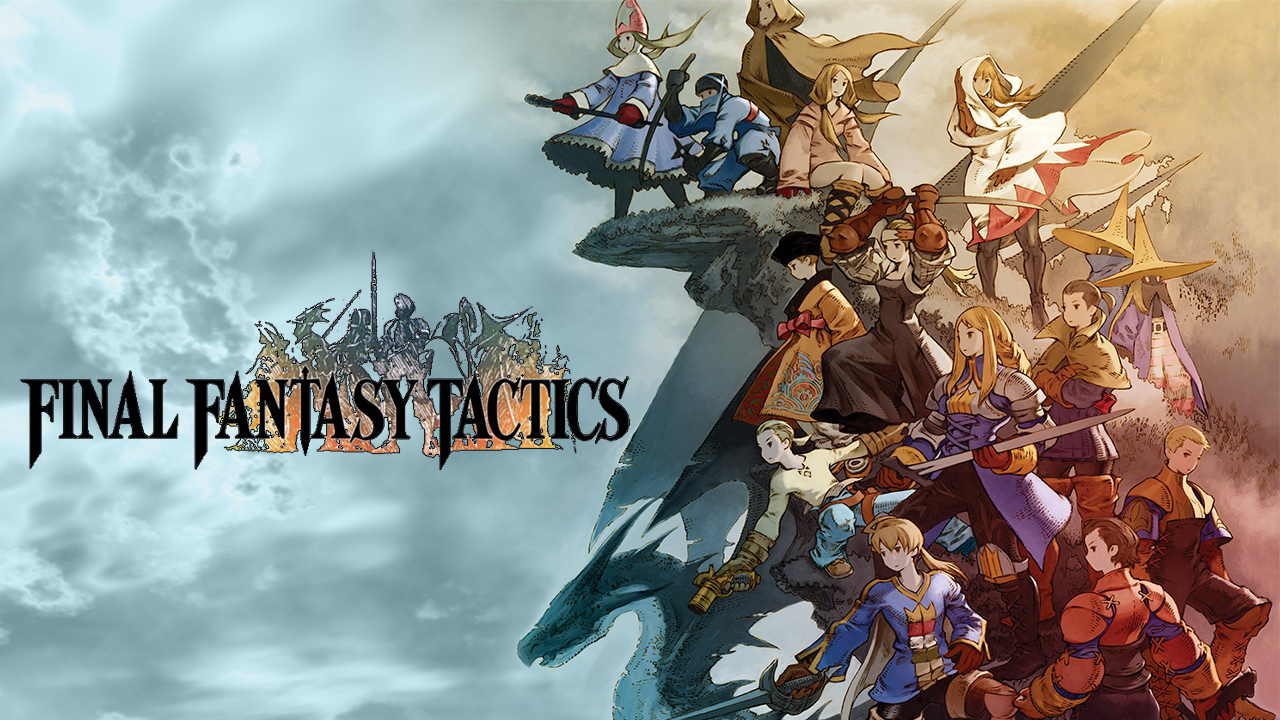Final Fantasy Tactics was released in mid 1997 just after Final Fantasy 7 released at the start of 1997, but it formed the first different take on the series. The games released in the original series were in the style of a more traditional RPG, the player assumes a character and roams around the world, interacting with NPCs and building their own team. When they encounter a battle, they enter a specific turn-based battle instance where the models generally have more details than in the overworld.

Tactics, as the name suggests, follows a more tactical RPG style focused entirely around cutscenes and battle instances. The player moves their team around the battlefield, coordinating the positions and attacks of their units to best take down their enemies, who are also dynamic in the same way. Additionally, unlike the main series games, the art style both in cutscenes and in battle scenes are identical, with the same exact sprites being animated for both.

It also manages to keep most of the traditional RPG elements of the first game, such as a robust class system featuring both magic based classes and physical based, character progression, and even some monster taming. It does put approach some of these elements non-traditionally such as the class system. Unlike most RPGs which lock you into one class, the player is allowed and even actively encouraged to swap units between classes. Each class on a character will have its own levels and many are locked behind the progression of one or more other classes.
While not the first tactical RPG nor among the first tactical RPGs (it seems it’s about 15-20 years after the first game of this style), it is the first one in the Final Fantasy contingent and was successful enough for its own remake in 2007 and a series of 4 sequels through 2013.
I would guess that in addition to its fun gameplay, what made this game so popular was its deep story. Right from the start, the player is introduced to the conflict and confronted with the intensity of the class dynamics in the kingdom of Ivalice, a world of princesses and knights and commoners. Our protagonist is the son of the noble house of Beoulve, a house of knights that has served the Crown of Ivalice. One of the first missions we embark on is to stop a group of thieves, and while it’s made very overt these thieves are the bad guys, we get off-handed comments on how the knights are spoiled, snot-nosed brats and other comments alluding to the wealth and power these enforcers have historically had in Ivalice. As conflict escalates further, we find that this is building the set up for the main conflict of the game: the knights attempting to keep order in the land and the beginnings of an uprising on behalf of the lower classes for the harm inflicted on them by the nobles. Through the gameplay and tavern rumors, it’s revealed that Ivalice has just come out of a fifty year war and its King has recently died with his only heir being a child. This has led to immense political strife among the nobles for the Regent to the throne and between the nobles and commoners for the failing economy.
It’s very clear even in the opening of the game that it heavily tackles class dynamics and the immense impact these class dynamics can have in a society that heavily favors the wealthy. As we fight off the commoners that have joined this uprising, we get dialogue that explicitly mentions their hatred of the nobility, that they won’t stop until the nobility has acknowledged the harm they’ve done to the lower class. Even as we fight against them, they are also painted sympathetically. With the deep love that seems to follow this game and the compliments on its rich, complex story (that seems to be a huge reason for its popularity), I have high hopes for how these ideas on power and class will culminate, leading to a nuanced perspective that reveals our enemy (at least the commoners and their uprising) in the game is not really the enemy because the complexity of the circumstances don’t let it be that simple.
I really wasn’t expecting to want to play the game more than a couple hours if that because the game is 25 years old, but its gameplay is better than I would have thought and its thematic elements are also incredibly strong from the very beginning and they only build as you go through. Fully I was expecting mustache-twirling villainy and saintly heroes but the game, developed at a time where video games were really taking off, brought to the forefront a more nuanced depiction of good and evil and how those labels don’t often fit the people they’re meant to describe.

